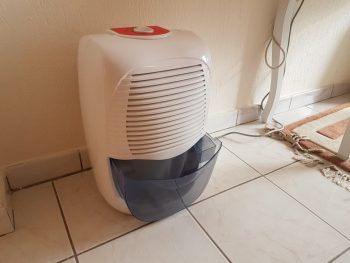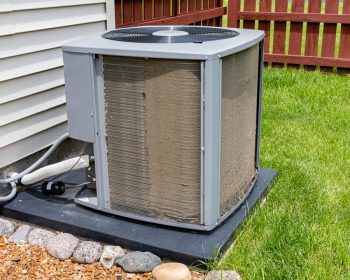
Understanding the behavior of mesophiles, organisms that thrive best at moderate temperatures, is essential in food safety and preservation. One of the common methods used to slow down the growth of these organisms is refrigeration. But what exactly happens to mesophiles at refrigerator temperatures? Let’s dive in.
At refrigerator temperatures, which are typically below the optimal growth range for mesophiles, these organisms experience a decrease in protein synthesis due to reduced flexibility for protein synthesis and sensitivity to temperature changes. While they cannot grow and reproduce as efficiently, they can still survive and maintain some metabolic activity at a slower rate. This is why refrigeration is used to slow down the growth of these microorganisms in food. However, some mesophiles can survive and even grow under refrigeration conditions, potentially causing foodborne illnesses.
Mesophiles: A Brief Overview
Mesophiles are microorganisms that grow best in moderate temperatures, with an optimal growth range from 20 to 45 °C (68 to 113 °F). These organisms, which include bacteria, archaea, and fungi, can be found in various habitats, provided that the temperatures are adequate. They are commonly found in soil, water, and composting or decaying consumable material. Some mesophiles, such as those living in our digestive systems, are beneficial to humans. However, certain mesophiles can cause diseases and infections, such as Staphylococcus aureus, Salmonella, and Listeria.
Mesophiles and Refrigerator Temperatures
Refrigerator temperatures typically range from 0 to 8 °C (32 to 46 °F), which is below the optimal growth range for mesophiles. At these lower temperatures, mesophiles experience a decrease in protein synthesis due to their reduced flexibility for protein synthesis and sensitivity to temperature changes. The fatty acid composition of their membrane, which affects their ability to function, does not allow for much fluidity at low temperatures.
While mesophiles are not able to grow and reproduce as efficiently as they do at their optimal temperature range, they can still survive and maintain some metabolic activity, albeit at a slower rate. This is why refrigeration is used to slow down the growth of bacteria and other microorganisms in food, extending its shelf life. However, it is crucial to note that some psychrotrophic bacteria, which can grow at low temperatures, may still cause spoilage in refrigerated foods.
Health Risks Associated with Mesophiles in Refrigeration
Mesophilic pathogens can survive under refrigeration and grow during any temperature abuse of the food. Several pathogens, such as Aeromonas hydrophila, nonproteolytic strains of Clostridium botulinum, Listeria spp., Yersinia enterocolitica, some strains of Bacillus cereus, and enteropathogenic Escherichia coli, can survive and grow under refrigeration conditions. These pathogens can cause foodborne illnesses if ingested. To minimize the risk of foodborne illnesses, it is essential to maintain proper refrigeration temperatures, practice good hygiene, and follow appropriate food handling and storage guidelines.
Preventing the Growth of Mesophiles in Refrigerated Food
To prevent the growth of mesophiles in refrigerated food, several best practices can be followed:
- Maintain proper storage temperature: Store perishable foods below 40°F (4°C) or above 140°F (60°C) to inhibit the growth of mesophilic bacteria.
- Ensure proper hygiene: Practice good hygiene during food handling and processing to minimize contamination.
- Monitor and control storage conditions: Regularly check and maintain the temperature and humidity of refrigerated storage areas to ensure optimal conditions for food preservation.
- Avoid temperature abuse: Be cautious of temperature fluctuations during transportation, storage, and display of refrigerated foods, as this can lead to the growth of mesophiles.
By understanding the behavior of mesophiles at refrigerator temperatures and implementing appropriate food safety practices, we can ensure the safety and quality of our food. Always remember that prevention is better than cure, especially when it comes to food safety.
Frequently Asked Questions
What are some examples of mesophiles?
Some examples of mesophiles include bacteria like Escherichia coli and Staphylococcus aureus, fungi like Aspergillus species, and yeasts like Saccharomyces cerevisiae.
What is the difference between a mesophile and a psychrophile?
Mesophiles are organisms that thrive best in moderate temperatures, typically between 20 to 45 °C (68 to 113 °F). Psychrophiles, on the other hand, prefer much colder environments and can survive and reproduce at temperatures below 15 °C (59 °F).
If mesophiles can still survive in refrigeration, why do we refrigerate food?
While mesophiles can still survive at refrigerator temperatures, their growth and reproduction is significantly slowed down. This extends the shelf life of food and reduces the risk of foodborne illnesses.
How can we protect ourselves from mesophilic pathogens in refrigerated food?
To protect against mesophilic pathogens, it’s important to maintain proper refrigeration temperatures, practice good hygiene, monitor and control storage conditions, and avoid temperature abuse. This includes regularly washing hands, cleaning surfaces and utensils, and properly storing and handling food.
Are all mesophiles harmful to humans?
Not all mesophiles are harmful. Some mesophiles are beneficial to humans and play a crucial role in our digestive system, such as certain types of Lactobacilli and Bifidobacteria. However, certain mesophiles can cause diseases and infections when they are in the wrong place or in high numbers.











